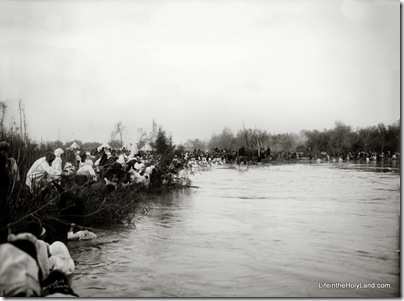From Haaretz:
In the winter of 2003, Saar Kfir, director of the Qasr al-Yahud site, stood not far from the swelling Jordan River. It was indeed beautiful, but the rising waters caused considerable damage to the comprehensive plan for upgrading and expanding the site, located east of the town of Jericho, where John the Baptist is said to have baptized Jesus. The project, which was originally approved in advance of the millennium celebrations – and was delayed because of the intifada and, later, by the 2003 floods – is now in its final phases.
When it is completed, hopefully before Passover, it will be possible for pilgrims to visit the third-most-important Christian site in Israel at their convenience: any day of the week, without advance coordination and without a military escort, as were necessary in the past.
Qasr al-Yahud, or “the Jews’ fortress” (a corruption of the Arabic meaning, “the Jews’ break”), is traditionally the place where the Israelites crossed over (that is, “broke”) the Jordan River and where Elijah the Prophet ascended to heaven, as well as where Jesus was baptized.
On January 18 and 19, the Orthodox Churches will celebrate Epiphany at the site, marking the “revelation” of Jesus to the three kings from the East. “This is one of the only authentic celebrations that remain in this country,” says Udi Izak, director of the school system in the Megillot regional council, in the Dead Sea region.
Read the whole article for a history of celebrations since 1967.
This photo is taken from the Southern Palestine volume of The American Colony and Eric Matson Collection (Library of Congress, LC-matpc-06788).
